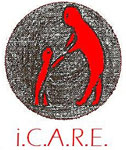What is Autism?
Autism spectrum disorder (ASD) and autism are both general terms for a group of complex disorders of brain development. These disorders are characterized, in varying degrees, by difficulties in social interaction, verbal and nonverbal communication and repetitive behaviors. With the May 2013 publication of the DSM-5 diagnostic manual, all autism disorders were merged into one umbrella diagnosis of ASD. Previously, they were recognized as distinct subtypes, including autistic disorder, childhood disintegrative disorder, pervasive developmental disorder-not otherwise specified (PDD-NOS) and Asperger syndrome.
ASD can be associated with intellectual disability, difficulties in motor coordination and attention and physical health issues such as sleep and gastrointestinal disturbances. Some persons with ASD excel in visual skills, music, math and art.
Autism appears to have its roots in very early brain development. However, the most obvious signs of autism and symptoms of autism tend to emerge between 2 and 3 years of age. Autism Speaks continues to fund research on effective methods for earlier diagnosis, as early intervention with proven behavioral therapies can improve outcomes. Increasing autism awareness is a key aspect of this work and one in which our families and volunteers play an invaluable role.
How Common Is Autism?
The official figure for Ireland is 1 in 100.
Prevalence Study Autism Counts – Irish Autism Action has funded a study that determined the number of people in Ireland who are on the autism spectrum. By providing a concrete figure for incidence of autism the Irish Autism Prevalence Study will make a compelling case for the State to invest in resources for autistic people. This study was carried out in conjunction with DCU and lead by Professor Anthony Staines. The study concluded that the current rate of autism in Ireland is 1 in 100. http://irishautismaction.blogspot.ie/2013/04/the-irish-times-april-9th.html
Although it is widely maintained that the increase in incidence can, in part, be attributed to better diagnostic procedures, it is apparent that the condition itself is reaching epidemic proportions worldwide.
What we do know is that the number of young children coming into the system each year is significantly greater than in the past and that the autism community in Ireland is growing and ageing. Therefore demand for services to meet the needs of this special population will also continue to grow.
What Does It Mean to Be “On the Spectrum”?
Each individual with autism is unique. Many of those on the autism spectrum have exceptional abilities in visual skills, music and academic skills. About 40 percent have average to above average intellectual abilities. Indeed, many persons on the spectrum take deserved pride in their distinctive abilities and “atypical” ways of viewing the world. Others with autism have significant disability and are unable to live independently. About 25 percent of individuals with ASD are nonverbal but can learn to communicate using other means. iCARE Ltd mission is to improve the lives of all those on the autism spectrum.
